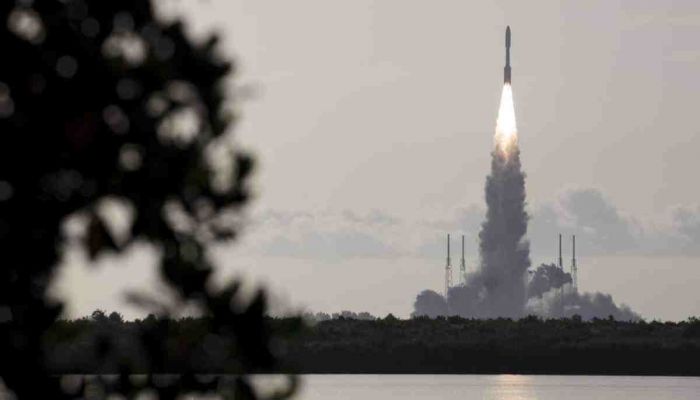
Desk Report
Publish: 31 Jul 2020, 06:04 pm

NASA has launched the latest Mars rover, Perseverance, on a six-month trip to the Red Planet as part of an ambitious, long-range mission to carry the first Martian rock samples back to Earth to be tested for signs of ancient life, reports AP.
The biggest, most advanced Mars rover ever built — a car-size spacecraft with sensors, microphones, drills and lasers — launched on Thursday morning.
NASA's Perseverance powered the Atlas V rocket through the bright morning skies in the third and final Mars mission of the year.
NASA’s science mission chief, Thomas Zurbuchen, pronounced the launch the start of “humanity’s first round trip to another planet.”
“There’s a reason we call the robot Perseverance. Because going to Mars is hard,” NASA Administrator Jim Bridenstine said just before liftoff. “In this case, it’s harder than ever before because we’re doing it in the midst of a pandemic.”
The overall cost has been estimated more than $8 billion.
The plutonium-powered, six-wheeled rover will dig down to gather tiny geological fossils that will be taken home in a kind of interplanetary relay race between several spacecrafts to countries about 2031.
China and the United Arab Emirates have made a head start last week, but all three missions are scheduled to hit their target in February after a trip of seven months and 300 million miles (480 million kilometers).
The United States, the first nation to successfully land a spacecraft on Mars, is attempting its ninth successful landing on the site, which has proved to be the Bermuda Triangle of Space Exploration, with more than half of the world's flights burning, collapsing or otherwise resulting in disaster.
China is sending both a rover an orbiter. The UAE, a newcomer to outer space, has an orbiter en route.
It’s the biggest stampede to Mars in spacefaring history.
The opportunity to fly between Earth and Mars comes around only once every 26 months when the planets are on the same side of the sun and about as close as they can get.
Launch controllers wear helmets and sat separate at the Cape Canaveral control center owing to the coronavirus epidemic, which forced hundreds of scientists and other team leaders away from Perseverance's elimination.
Approximately an hour into the ride, the controllers cheered, clenched their hands and traded air kisses and pantomimed high-five as the rocket exploded out of orbit around the Earth flawlessly and started to hurt to Mars.
The launch went off on time at 7:50am despite a 4.2-magnitude earthquake 20 minutes before liftoff that shook the Jet Propulsion Laboratory.
Perseverance will aim for treacherous unexplored territory: Jezero Crater, riddled with boulders, cliffs, dunes and possibly rocks bearing the chemical signature of microbes from what was once a lake more than 3 billion years ago.
The rover will store half-ounce (15-gram) rock samples in hundreds of super-sterilized titanium tubing.
This will also introduce a mini aircraft, which would undertake the first electric ride on another earth, and evaluate other technology to pave the way for potential astronauts.
That includes equipment for extracting oxygen from Mars' thin carbon-dioxide atmosphere.
Two other NASA landers still work on Mars: 2018′s Observation and 2012′s Curiosity rover. Six other astronauts are observing the earth from orbit: three from the United States, two from Europe and one from India.
Subscribe Shampratik Deshkal Youtube Channel
© 2024 Shampratik Deshkal All Rights Reserved. Design & Developed By Root Soft Bangladesh